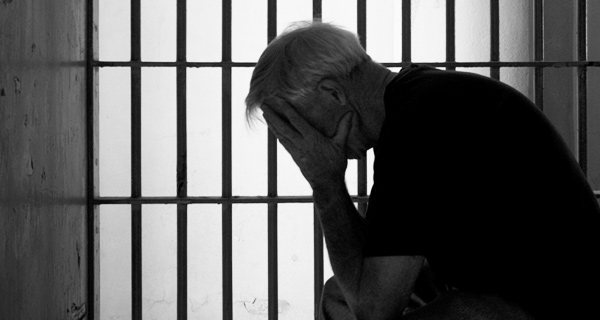[captionpix imgsrc=”https://pvnn.org/wp-content/uploads/2015/09/chrisliewitness.png” captiontext=”Photo courtesy of onechristianlife.com”]
Today, over three hundred inmates have been released from prison after DNA testing proved their innocence.[ref]”Our Work,” The Innocence Project, accessed August 30, 2015, http://www.innocenceproject.org/free-innocent.[/ref] The release of these people, while a great step towards a better justice system, barely scratches the surface considering that there are up to 120,000 innocent inmates in America right now.[ref]Justin Rohrlich, “Why Are There Up to 120,000 Innocent People in US Prisons?” VICE News RSS, November 10, 2014, accessed September 1, 2015, https://news.vice.com/article/why-are-there-up-to-120000-innocent-people-in-us-prisons.[/ref] In one famous 1984 case, Jennifer Thompson-Cannino was raped in her home by a man. Thompson-Cannino memorized the minor details of the assailant, and later selected the supposed perpetrator, Ronald Cotton, in a photo lineup, who was sent to jail. The problem, however, was that Cotton did not rape Thompson-Cannino, but Bobby Poole, Cotton’s cellmate, who later confessed his crime. In turn, Cotton was awarded a retrial. Jennifer though, was unconvinced, and stuck to her guns that Cotton raped her, which then led to the judge denying Cotton his freedom. By 1995, forensics science improved drastically, allowing for a much more accurate evaluation for Cotton’s case. Indeed, the DNA evidence revealed that Cotton was innocence.[ref]Phoebe Judge, “Jennifer Thompson,” The Story, June 13, 2013, accessed August 30, 2015.[/ref] As exemplified by this case, it is impossible for America to have the perfect justice system. However, certain judicial practices need to improve, otherwise it threatens the freedom of many Americans. The vendetta is utilizing eyewitness testimony to come to a conclusion about the crime, while trying to protect those who may be falsely accused.
Examining Thompson-Cannino’s case further, the blame goes to the inherently flawed limitations of human memory. Humans are incapable of accurately recollecting memory. To fill in the gaps, memories rely on strategies from the brain to recall certain events. This, in turn, deems human memory as easily suggestible. In a photo lineup, for instance, the eyewitness is usually not informed by the police that the culprit may not be in one of the photos. Yet the eyewitness is convinced that the culprit is in the photo and may result in false identification.[ref]Marc Green, “Visual Expert Human Factors: Errors in Eyewitness Identification Procedures,” accessed August 30, 2015, http://www.visualexpert.com/Resources/mistakenid.html.[/ref] In one such incident, Timothy Cole was arrested in 1985 for raping fellow classmate, Michele Mallin. According to Cole’s family, the officer working the case “steered” Mallin into choosing Cole’s picture, since he resembled the sketch that was composited from Mallin’s description. After Cole’s family pressed for further investigation, police discovered inconsistencies with the investigation, and finally released him.[ref]Shoshana Guy, “Police Photo Lineups Challenged after Series of Wrongful Convictions,” NBC News, April 4, 2012, accessed August 30, 2015, http://rockcenter.nbcnews.com/_news/2012/04/04/11014568-police-photo-lineups-challenged-after-series-of-wrongful-convictions.[/ref]
Although it would be ideal to require physical evidence before convicting someone, not all crimes leave behind solid evidence. Yet sometimes, only eyewitness testimonies are available. Hence, police officers need to practice better techniques when dealing with the eyewitnesses. A proposed strategy focuses on shortening shorten the amount of time eyewitnesses are given when evaluating a lineup. Dr. Neil Brewer, a psychologist from Australia, conducted a study where he noticed that eyewitnesses made more accurate choices when given only two seconds to identify a suspect. This is in contrast to normal practices, where police officers allow the eyewitness to take their time. Indeed, the study revealed that his version of the lineup resulted in a twenty-one to sixty-six percent increase in performance.[ref]Jonah Lehrer, “How To Improve Eyewitness Testimony,” Wired.com, April 15, 2012, accessed August 30, 2015, http://www.wired.com/2012/04/how-to-improve-eyewitness-testimony[/ref] The problem with the current practice, according to Brewer, is that strong memory traces are easier to access than weak and mistaken ones. This inevitably then leads eyewitnesses to focus on specific traits, while being unable to recognize mistakes in their recollection.
Ideally, court rulings should demand physical concrete evidence whenever it is available, while eyewitness testimony should only help drive the story behind the case. As stated before, since eyewitness testimony is very fallible, each record should be handled with skepticism unless proven true. This is the key to due process – to make sure both the victim, and the one being accused for the crime, are given fair and equal trial. But because there are some cases where there is not any concrete evidence, police should be required to practice effective techniques when dealing with eyewitnesses. Such techniques include making sure that when conducting any form of lineup to inform the eyewitness that the perpetrator might not necessarily be in the lineup. In addition, law enforcement officials should require lineup identification to be quicker, which can help ensure that accusations are more accurate. Due process is necessary for a free country, and should be scrutinized no matter what.
Take Action:
To learn more about eyewitness testimony visit the Innocence Network, an online archive of cases around the country, providing information about false confessions and eyewitness testimony.
To get involved with the movement, also check out the Innocence Project to see how you can help out. They’re an organization trying to bring justice to those wrongly accused.




